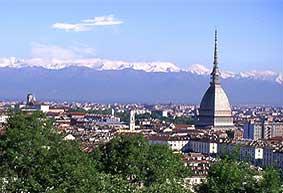


All the structures

The city owes its name to the population of Taurisci or Taurini that seem to have their origin in the encounter between the Tirreni of Asia Minor and the Ligurians of Iberian origin. From the ancient Taurini site to Roman colonization and on to the medieval period, the monuments of the city testify to its rich history. Piazza Castello is the core of the oldest part of the city, with the castle that gives it its name in the centre.
Turin was a city of baroque splendour as can be seen in the area between Piazza San Carlo and Via Po as far as the Mole.
Meeting places in Turin are beautiful porticos that line the streets and squares of the city between the bars and shops.
From Superga and the Capuchin mount, the view of Turin is wonderful, with a background of the Alps and the 19th-century Valentino park beside the river.
At the foot of the hill located opposite the Vittorio Emanuele I Bridge is the Gran Madre di Dio neoclassical church. As many as four hundred houses are scattered on the hills of Turin; the best known is certainly Villa della Regina, reached from Piazza Gran Madre di Dio by climbing the road of the same name.
Worth a visit in the province of Turin is Avigliana, an important village during the late medieval era. Places of city pride are the 10th-century castle and the trapezoid-shaped Piazza Conte Rossi. Outside the town of Avigliana is the Ecomuseum of Dinamitificio Nobel.
The Regional Natural Park of the lakes of Avigliana is over 400 hectares in size. The Great Lake is the best known to the world of tourism. The Little Lake is also splendid, and ideal for bird- watching. From the Little Lake one can reach the Rea Botanical Garden with over 2500 plant species.
The jewel of the agricultural tradition is Cuorgnè; if you can, visit on Thursday for the market where you can buy excellent Canavesi toma cheese or ‘mocecca’ (meat conserved in pieces).
Frossasco is famous for its four gates that still today give access to the village where one can also visit the original Museum of Taste, a true journey in the history of food and local culinary specialities.
Susa is an ancient town defined by its original architecture. Its succession of streets and squares is also well known to gourmands for the canestrelli biscuits and sweet focaccia bread. If you want to enjoy a good glass of wine go to Caluso, a hilly village that produces Erbaluce di Caluso and Caluso Passito DOC wines.